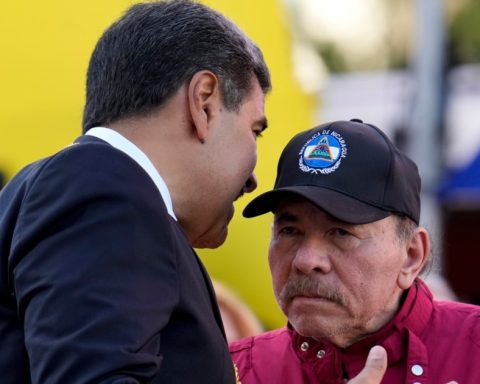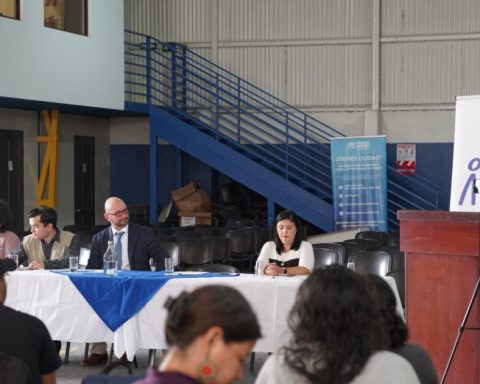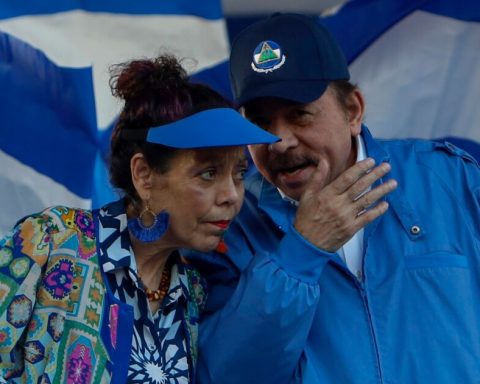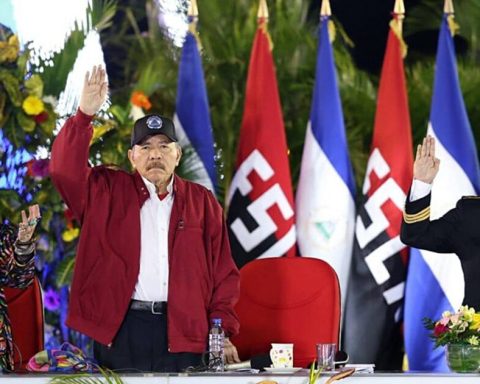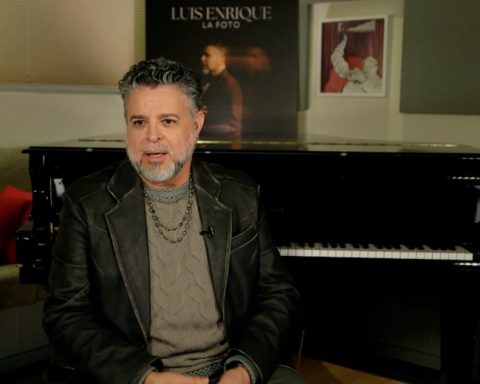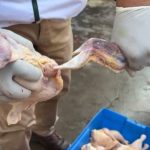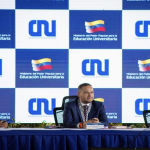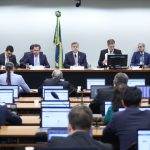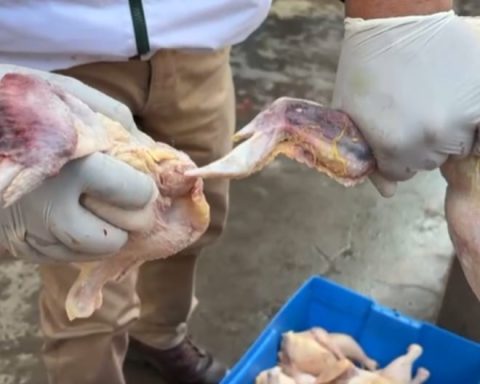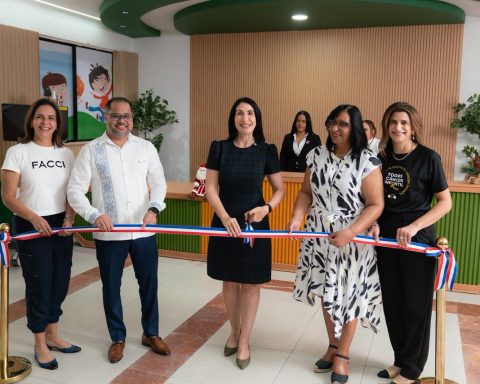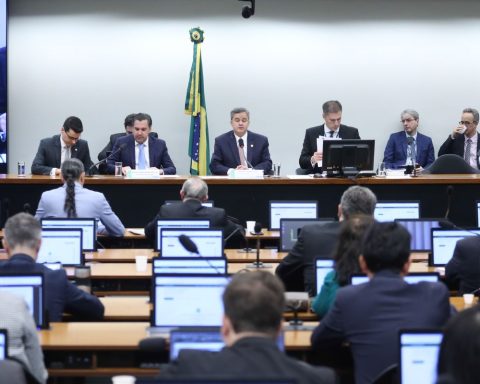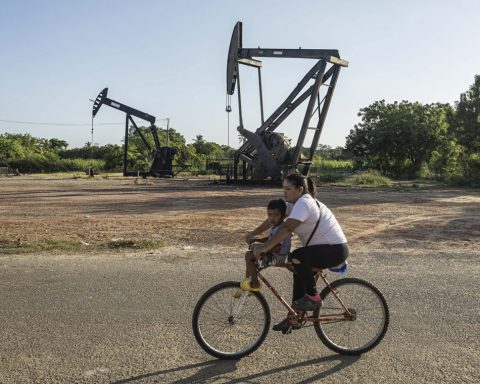The massive abstention in the municipal votes on November 6 made it easier for the ruling Sandinista National Liberation Front (FSLN) to win the last twelve Nicaraguan mayoralties in which the red and black flag was not waved. Official data from the Supreme Electoral Council (CSE) – which lack credibility and cannot be audited – show that, in these dozen municipalities, there were fewer voters than in the 2017 municipal elections.
In places like Old CityFor example, where the FSLN obtained 1,663 votes in 2017 and was defeated that year by the PLC with 2,248 votes, it now “won” the mayoralty with 1,683 votes, that is, only 20 votes more than five years ago.
According to the Electoral Power –under absolute control of the FSLN– in 2017 there were 121,414 valid votes in those twelve municipalities, and in 2022, 93,170 voted, that is, 28,247 fewer votes, equivalent to 30.3%.
The new mayoralties held by the FSLN are: Camoapa, San José de los Remates, Santo Domingo, La Trinidad, Ciudad Antigua, Bocana de Paiwas, El Tortuguero, Muelle de los Bueyes, La Cruz de Río Grande, Mulukukú and Wiwilí-Jinotega, previously administered by the Constitutionalist Liberal Party (PLC) and San Francisco de Cuapa, previously in charge of the Nicaraguan Liberal Alliance (ALN), which in recent years have served as collaborating parties of the regime.
Prior to the voting, the Sandinista Front controlled 141 of 153 mayoralties distributed in 15 departments and two autonomous regions on the Caribbean Coast. Officially the FSLN won 135 municipalities in 2017, but the six other mayorships were usurped in October 2020 and July 2022.
The municipality where the greatest abstentionism was registered was in Wiwili-Jinotega, mayoralty that in 2017 was won by the PLC, but in 2020 was usurped by the FSLN. There, the total number of valid votes went from 22,347, in 2017, to 12,946 in the recent municipal electoral farce. The difference is -9401 votes.
The citizen observatory Urnas Abiertas indicated that, during these municipal votes, there was an abstention of 82.7%, which exceeded the level observed in the “election farce” of 2021, which was 81.5%. However, the CSE assured that abstention was 42.9%.
Lack of political competition
The assignment of 100% of the municipalities to the FSLN is the culmination of a process lacking in legitimacyin which the FSLN participated only with its political collaborators: the Constitutionalist Liberal Party (PLC), the Alliance for the Republic (APRE), the Nicaraguan Liberal Alliance (ALN), the Independent Liberal Party (PLI Alliance), and Yapti Tasba Masraka Nanih Asla Takanka ( yatama).
In addition, it occurs at a time when Nicaragua persists sociopolitical crisis emerged from the brutal repression and massacre against the citizen protests of the April 2018 Rebellion. Since then, the Ortega and Murillo regime has imposed a de facto police state, with more than 200 political prisoners, and went from forging fraud elections to completely liquidate municipal autonomy.
Ivania Álvarez, from the Urnas Abiertas observatory, pointed out that, on the day of the vote, there were “many reports of incidents” coming from the municipalities that were not under the control of the FSLN, which were related to the denial of entry to the prosecutors in the Vote Receiving Boards (JRV).
“I have reports, for example, from Ciudad Antigua about the mass voter transfer of communities that people did not recognize,” said Álvarez.
Open Ballot Boxes also received, according to the opposition, reports of “people voting with special permits‘because they were building roads over there and they couldn’t go home’.
This situation is “irregular” because “this is a territorial election” and people who are not from the municipality “have no reason to go to elect local authorities… This massive transfer disrupts the dynamics of the territory,” he explained.
He highlighted other factors that explain the electoral results, such as: the migratory waves of Nicaraguans who have left the country, the little public interest in the process, the cabsolute control of the FSLN at the Voting Centers and “the carting of people that was scary.”
November 6 “was filled with an atmosphere of terror”, the mere fact “that the Police were there all the time generates the feeling that at any moment they could take you prisoner”, Álvarez stressed.
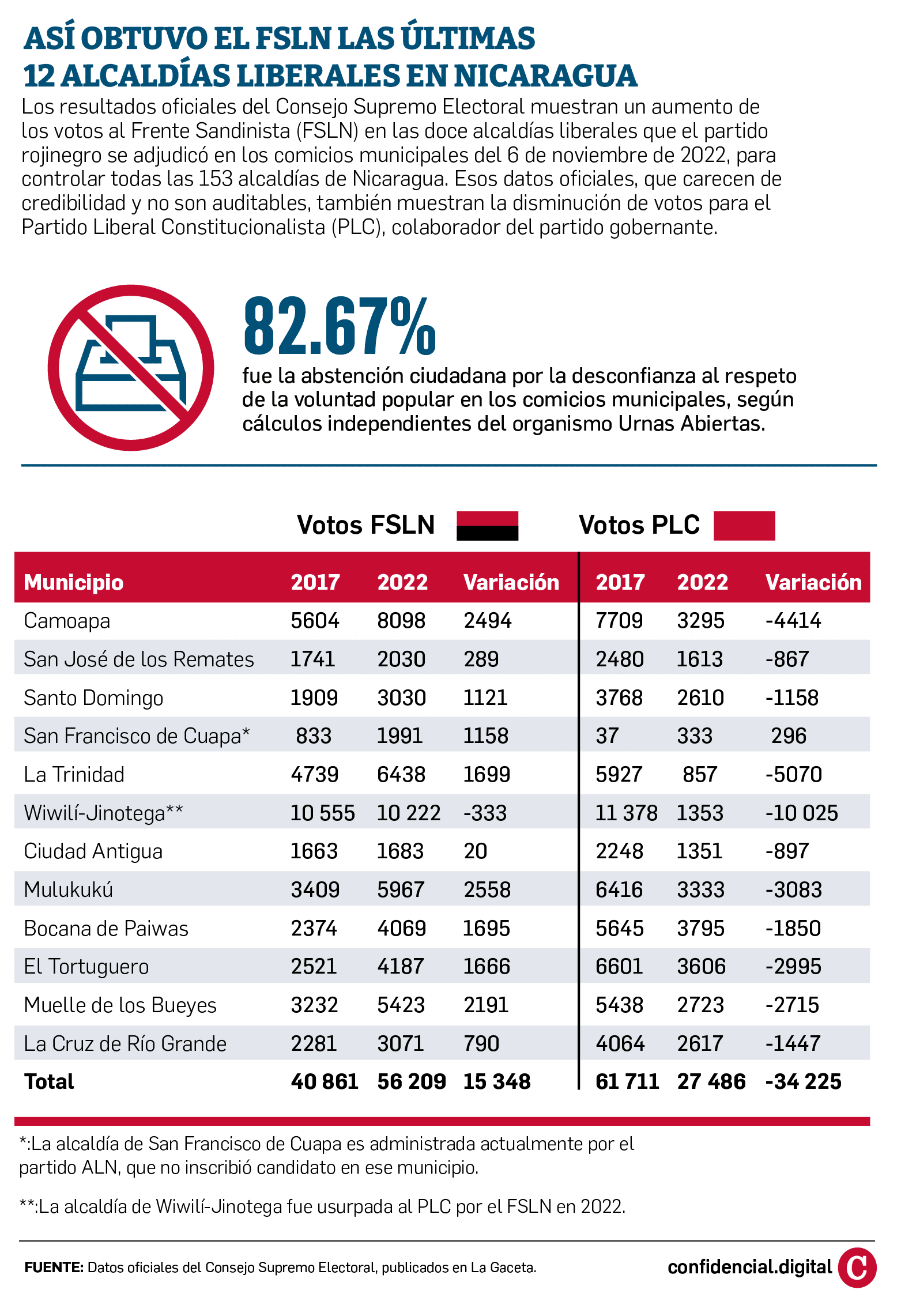
Only the FSLN voted
According to the official results, the valid votes for each political party in those twelve municipalities show that the FSLN had a slight increase in those territories, going from 40,861 votes in the 2017 elections to a total of 56,209 in 2022, that is, 15,348 new votes.
The municipality where the CSE data indicates a supposed greater growth of the vote towards the Sandinista Front is Mulukukuin the Autonomous Region of the North Caribbean Coast (RACCN), where that party would have gone from 3,409 votes in 2017 to 5,967 in 2022, that is, 2,558 additional votes.
A similar case is that of Camoapain the department of Boaco, where the CSE assigned the Front 5,604 votes in the 2017 municipal elections and 8,098 in 2022, which represents an increase of 2,494 votes.
Instead, the PLC did not get even half of the votes it received in the last municipal elections, in which he obtained 11 of these 12 mayorships. In such a way that this party went from receiving 61,711 valid votes in 2017 to 27,486 in 2022, which means the loss of 34,225 votes.
Among the municipalities where the PLC had the most losses is The Trinityin the department of Estelí, where it went from 5,927 votes in 2017 to 857 in the last municipal elections, that is, 5,070 fewer votes.

